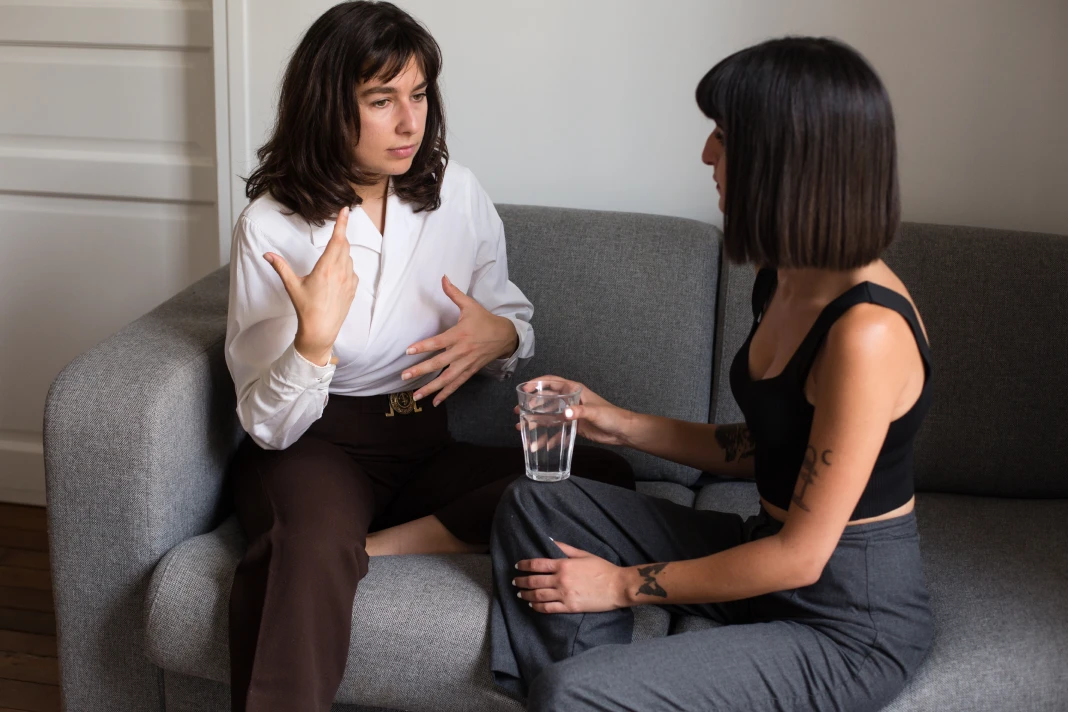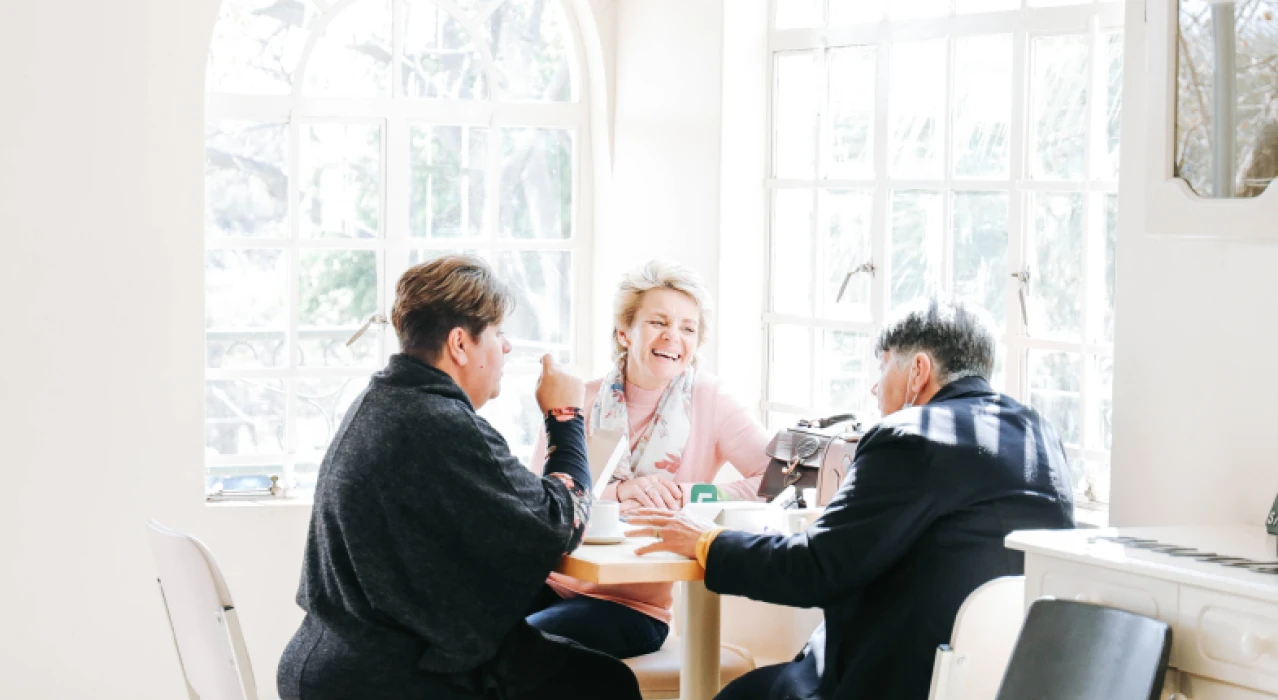Communication difficulties
- Emma Finch, Speech and Language Therapist
- 5 minute read
- Last updated: September 2023

About one-third of stroke survivors experience communication difficulties. This can include problems with speaking, understanding, reading, writing or understanding of the rules about appropriate communication.
Communication difficulties will affect people in different ways. This depends on the size of the stroke and the parts of the brain affected. These problems can have a huge impact on a person’s daily life and also affect relationships with family and friends.
Why do communication difficulties happen?

Communication is complex and involves many parts of the brain. The problems a person experiences will depend on which part of the brain has been affected by the stroke. Problems range from mild to severe, depending on the size of the stroke. For example, one person may struggle to find the odd word, whereas another person may be completely unable to say anything verbally.
Common communication difficulties
These problems can occur on their own, but it is very common for them to occur together. It is important to remember that communication difficulties don’t affect a person’s intelligence.
Aphasia
Aphasia affects your ability to understand others (receptive language) or to speak (expressive language). It can also affect your reading, writing or use of numbers and gestures. There are many different types of aphasia.
Dysarthria
Dysarthria happens when weakened muscles of the face, mouth and throat make it difficult to speak clearly. Speech might sound slurred, slow, quiet or strained.
Apraxia of speech
This happens when there are problems coordinating and planning the movements of the muscles of the face, mouth and throat. This makes it difficult to initiate and sequence the sounds that make up speech.
Cognitive communication difficulties
The person struggles to understand the non-verbal and social rules that are key to good conversations, such as the use of facial expressions, humour, taking turns and knowing what to say in different situations.
Are there treatments that can help?
Communication problems can be treated by a speech and language therapist (SLT). The SLT will do different tests to help to plan the therapy that will be needed. Therapy will not only focus on treating the communication difficulty itself but also on giving the stroke survivor ways to work around the problem. This may include using different ways to communicate, such as gestures, writing or the use of electronic devices.
It is important to remember that therapy is not just what happens in the session with the SLT – it also includes practice completed outside of the sessions. This treatment may be provided in a hospital or rehabilitation setting or in the person’s own home.
Goal setting
The speech and language therapist will work with the stroke survivor to set goals that are both important and realistic. That could include chatting to family/friends, asking for things in a shop, texting, reading a book or returning to work. As communication problems affect stroke survivors and their families in different ways, goal-setting sessions are key to making sure that the therapy is tailored to the person’s individual needs.
Supporting someone with communication difficulties
Remember every person will have their own preferences for how you can support them to communicate. This list has some ideas which other stroke survivors have found helpful.
- Minimise distractions – turn off TV/radio, move to a quiet room.
- Ask the person how you can support their communication.
- Do not rush. It is important to feel comfortable with some silences.
- Don’t pretend that you have understood what they have said – always check
- Don’t correct the person, especially if you have understood the intended message.
- Don’t interrupt or finish the person’s sentences.
- Ask questions in an either/or way instead of open questions that are more difficult to respond to. For example, “Would you like tea or coffee?” instead of “What would you like to drink?”.
- Keep your language simple – ask one question, or give one piece of information at a time.
- Use all forms of communication – pointing, gesturing, facial expressions, pictures, writing. Experiment with what helps.
Other information
Top tips
Communication is more than words
Remember that the actual spoken words we use in conversation make up less than 10% of communication. The rest is made up of body language, facial expression, tone of voice and many other non-verbal methods. This is why it is so important to use all other forms of communication when interacting with a person experiencing communication problems.
Emma Finch | Speech and language therapist |
Frequently asked questions
Most communication difficulties will improve, but it is very difficult to predict by how much. It is also hard to know how long the process will take. People often make the most improvement in the first few weeks and months after a stroke. However, some people still continue to recover for months and years after a stroke.
It is common for communication difficulties to vary over time – you may have good and bad days. Some people may even vary over the course of a day.
Communication is influenced by different physical and emotional factors. Feeling tired, lacking confidence in a situation, being in a noisy environment or feeling low in mood can all make it harder to communicate after a stroke.